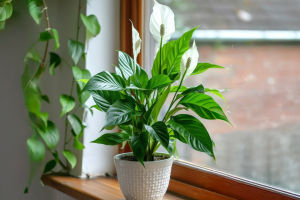Have you ever wondered where the paper you write on comes from? It might seem like a simple material, but the process of making paper from plants is much more complex and fascinating than you'd expect.
The journey from a plant's fibers to the paper in your hands involves several stages of transformation. Let's dive into how plants are turned into paper and why this process matters.
Understanding the Basics of Paper-Making
Paper has been used for thousands of years, with the earliest forms originating from plant-based fibers. Traditionally, paper is made from wood pulp, but it can also be crafted from other plant materials, such as cotton, and bamboo. The key to paper-making lies in plant fibers that, when broken down and reformed, create the thin, flexible sheets we use every day.
The Paper-Making Process: From Plant to Pulp
1. Harvesting the Plants
The first step in making paper from plants is to harvest the raw materials. While wood is the most common source, other plant fibers like bamboo, or flax are also used. These fibers are collected and processed to extract the cellulose, the main component needed for paper production.
2. Breaking Down the Fibers
After harvesting, the plant fibers are chopped into small pieces and then cooked in a chemical solution, often with sodium hydroxide. This process, called pulping, breaks down the plant's lignin (the substance that binds fibers together) and separates the cellulose fibers.
3. Turning Pulp into Paper
Once the pulp is created, it is diluted with water to form a slurry. This slurry is poured onto large, fine mesh screens to allow the water to drain, leaving behind a thin layer of fibers. The fibers are then pressed and dried to create a solid sheet of paper. Depending on the type of paper being made, it may go through additional treatments like bleaching or adding other materials for texture or color.
The Environmental Impact of Plant-Based Paper
Making paper from plants, especially wood, has significant environmental consequences. Deforestation, chemical runoff, and the high water consumption involved in paper production can take a toll on ecosystems. However, many modern paper manufacturers are taking steps to reduce these impacts by sourcing sustainable materials, using recycled paper, and adopting eco-friendly production practices.
One of the most significant environmental benefits comes from using plants like bamboo, which are fast-growing and require less water than traditional wood sources. These plants regenerate quickly, making them a more sustainable option for paper production.
Why Use Plant-Based Paper?
1. Sustainability
Plant-based paper is often considered a more sustainable alternative to synthetic paper products. By using renewable resources, paper manufacturers can create products that have less impact on the environment.
2. Recyclability
Plant-based paper is highly recyclable. Recycling paper helps reduce waste, conserve resources, and save energy, making it an eco-friendly choice for both consumers and industries.
3. Biodegradability
Unlike plastic-based products, paper made from plants is biodegradable. This means that it will naturally decompose when exposed to the elements, reducing landfill waste.
Conclusion: A Closer Look at the Paper You Use
Next time you pick up a piece of paper, think about the journey it took to get there. From the fields where plants are grown, to the pulping process that breaks down fibers, to the final product that you hold in your hands, paper-making is a remarkable process that connects us to nature. Understanding how paper is made from plants gives us a greater appreciation for the materials we often take for granted.
By choosing paper made from sustainable sources and recycling it whenever possible, we can continue to support eco-friendly practices and protect the planet for future generations. So, the next time you use paper, remember its origins—made from plants, shaped by innovation, and serving a greater purpose in our everyday lives.


